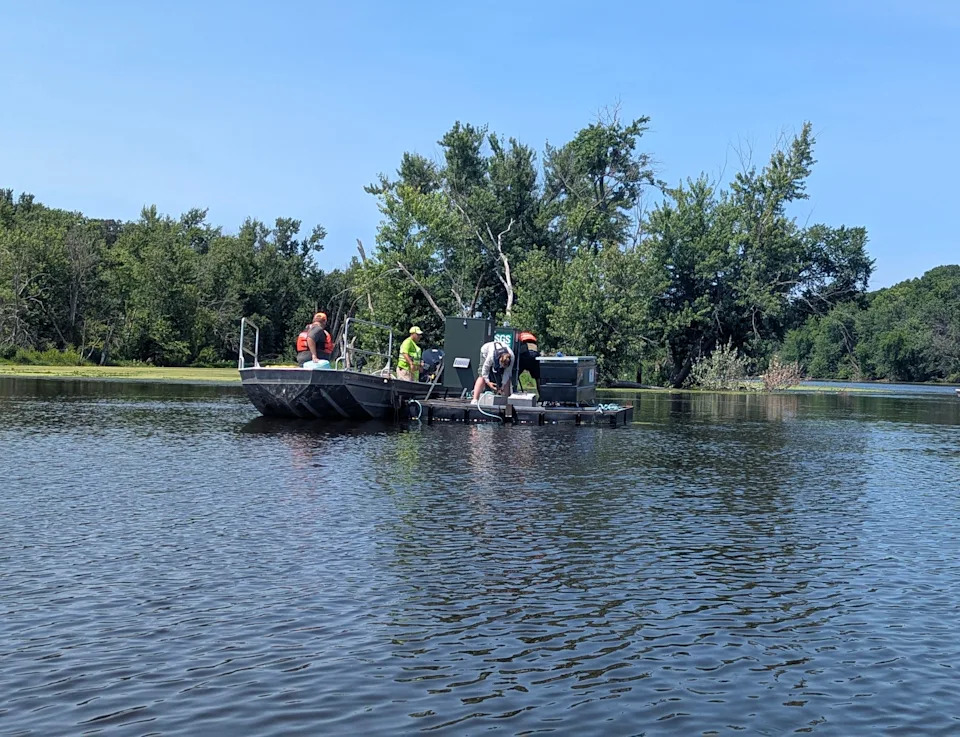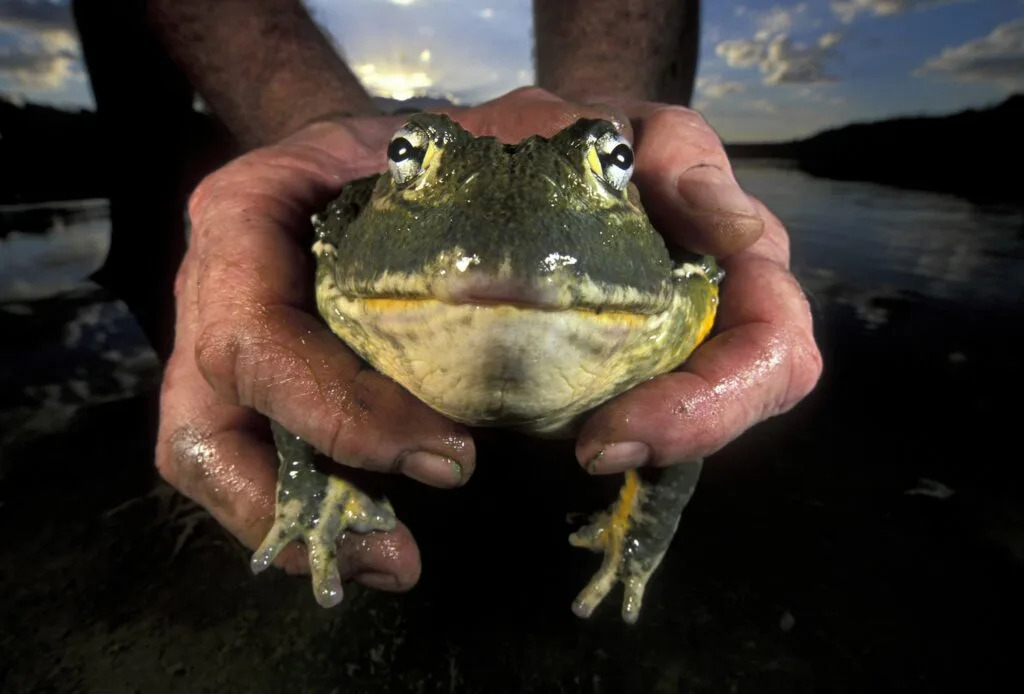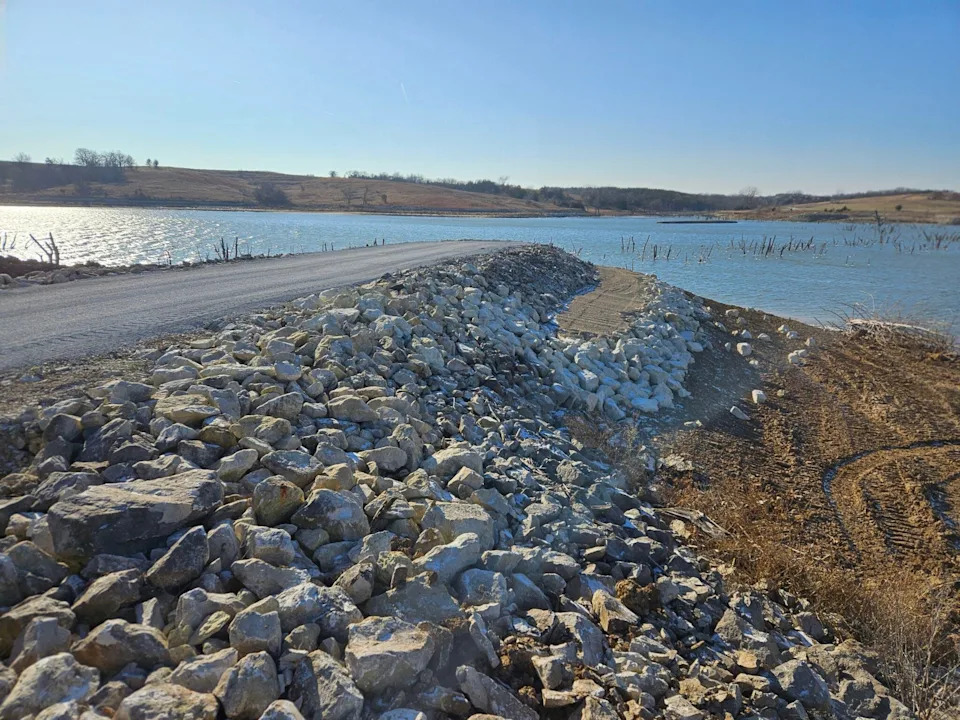In late July, a team of researchers set out on the Mississippi River near La Crosse to lay a new kind of trap for invasive carp.
The researchers hope it will prove to be another tool to fight the nuisance fish, multiple species of which have been making their way upriver for decades. But it might sound counterintuitive at first.
They're going to feed them.

The U.S. Geological Survey (USGS), and the Wisconsin and Minnesota Departments of Natural Resources are working together to try baiting silver and bighead carp with their favorite food — a pelletized form of nutrient-rich algae. Then, when the fish have formed a habit of visiting the floating feeder, the scientists will send out commercial fishers to catch them.
More: Could invasive carp show up in the Wisconsin River? Middle schoolers learn to test for them.
In high densities, invasive carp can wreak havoc on native fish populations in rivers and lakes because they outcompete other fish for food and space. They are also believed to degrade water quality, which can hurt sensitive organisms like freshwater mussels. Silver carp famously jump out of the water when spooked, startling boaters and skiers.
Though invasive carp are plentiful further downriver, they're not as common yet around La Crosse — a good thing, but it means they're hard to find. That's why researchers are hoping to get them to gather at the feeders so more can be rounded up at once.
"At this point we don't have an abundance that's causing problems," said Grace Loppnow, invasive fish consultant for the Minnesota DNR. "We're trying to keep it that way."
Loppnow; Kristina Pechacek, a fisheries biologist for the Wisconsin DNR; and Jake Faulkner, a USGS fish biologist, were on the team installing feeders in the river the last week of July. The feeders will dispense between four and six pounds of food for the carp four times a day, and commercial fishers contracted by the Minnesota DNR will fish the surrounding area Aug. 4-8, Sept. 2-5 and Sept. 30 to Oct. 3.
Researchers will take data from the carp, like their length, weight and age, which can be determined by examining the fish's inner ear. Then they'll donate their catch to places like the Minnesota Zoo and the state's raptor center, which can use it as animal feed.
More: Cuts to agencies that study, safeguard Mississippi River have to stop, advocates say
Since the feeders are located on the Wisconsin side of the river, Wisconsin DNR staff will manage on-the-ground logistics, Pechacek said. They're also hoping to use the opportunity to study other types of river fish that might get swept up in the carp nets.
Invasive carp were first imported to the southeastern U.S. in the 1970s to control weeds in aquaculture farms. They escaped into the Mississippi River. Silver carp, grass carp and bighead carp have been documented in the upper river system, including in western Wisconsin tributaries like the Black and Chippewa rivers. Individual invasive carp have been caught as far upstream as the Twin Cities metro area, and Midwest states are spending big to keep them out of the Great Lakes.
More: Silver carp, harmful to fish and water, detected in western Wisconsin's Chippewa and Black rivers
Scientists have worked for decades to find ways to control invasive carp populations, installing barriers that deter the fish with sounds and bubbles, using special nets to snag fish that jump out of the water, tagging and tracking them to monitor movements, and herding them to specific locations with remote-controlled kayaks. Some even say people should eat them to get them out of the water en masse.
But the fish have proved difficult to manage. That's especially true in the La Crosse region, where the Mississippi is wide and they can find more places to hide. In colder months, Loppnow said, carp are sluggish and travel in packs, making them easier to round up. That's not the case in summer and fall.
Baiting invasive carp is a relatively new weapon in USGS's arsenal, Faulkner said. A study by his colleagues on baiting grass carp in the river between Iowa and Illinois just ended, but results aren't yet publicly available.
Still, it could be a promising way to collect more information about the fish in the river near Wisconsin.
The public is asked not to moor to or stand on the feeders.
Madeline Heim covers health and the environment for the Milwaukee Journal Sentinel. Contact her at 920-996-7266 or [email protected].
This article originally appeared on Milwaukee Journal Sentinel: Scientists feed invasive carp in Mississippi River near La Crosse








Comments